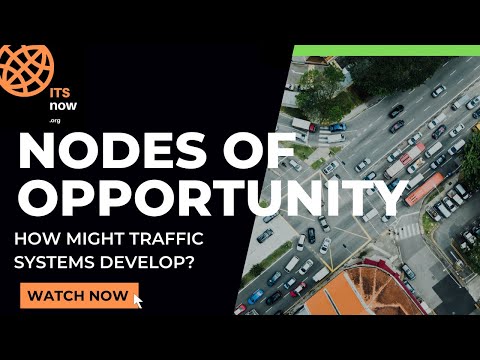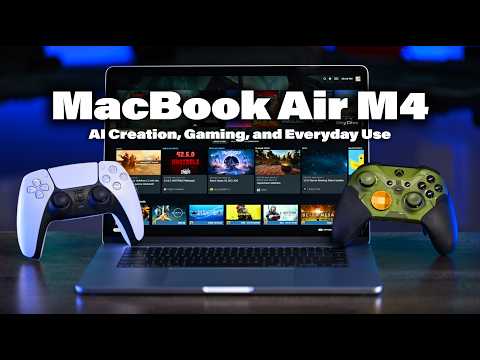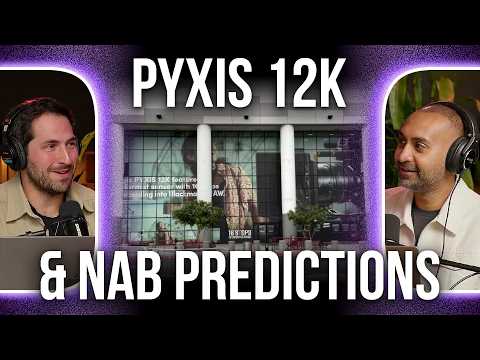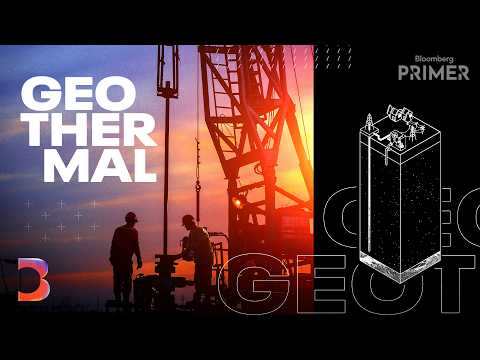Nodes of Opportunity

Hey everyone, in this edition of ITS Now, we'll be looking at how the connected and distributed nature of ITS infrastructure could lead to a really interesting future. I'm Alistair, and this is ITS Now. Over the years, traffic systems have evolved to become increasingly sophisticated in response to the increase in the volume of traffic and as technological advances have resulted in the ability to implement enhanced capabilities. However, the advent of emerging technologies promises a step change in capabilities, but poses issues for how these can be integrated effectively with existing ITS systems to provide the most benefits to users. There is widespread recognition that technology on our highways is developing at pace and although the benefits which are envisaged are significant, the challenges these pose are also substantial. So how did our roads get wired? Earlier traffic signal installations operated in isolation, although it was quickly realized that synchronising the operation of adjacent sites provided superior levels of performance. To start with this was achieved by using sets of traffic plans pre-programmed into each traffic signal controller, this provided a good level of service, but relied on the accuracy of the real-time clocks in each cabinet. However,
to update the plans, it was still necessary for an engineer to physically attend the site and the scope to adjust plans in response to unexpected traffic patterns was limited. It was therefore realised, that by running the plans from a centralised Urban Traffic Control (or UTC) location, it would overcome these deficiencies. To achieve this, each site had to have a communications link to the control room. These were usually implemented using leased lines, which provided a permanent telephone connection between the central control room and each equipped signal installation. Due to the technology available at the time, the data interface consisted of a limited number of bits, which could each typically request a traffic stage to run or confirm back to the control room which stage was currently running. A system called SCOOT was introduced to provide a synchronized method of control here in the UK, and this is also vehicle activated. This could use communications infrastructure to also provide
data to the control centre, about the volume of traffic leaving each signal installation, allowing SCOOT to dynamically adjust traffic plans so that the operation of subsequent signal sites could be optimised for the traffic which would arrive at them imminently. This type of topography where a control centre is linked to the majority of the signal sites on the road network has therefore become commonplace around the UK. Over time, the range of equipment installed on the highway network increased, including Variable Message Signs, CCTV and parking guidance systems. With these deployments came a need to improve the supporting communications infrastructure, luckily over recent years the ability to install higher speed and larger bandwidth communications into roadside locations has become much easier.
In addition, the uptake of newer technologies has in part been driven by the withdrawal of older communications technologies, such as leased lines here in the UK. However, with the ubiquity of the newer types of communications, including IP and broadband, along with wireless technologies, there's usually a solution available which can be implemented appropriate to the required functionality. Because of this, most cities these days have comprehensive communications infrastructure spread across their highway network, connecting the plethora of equipment used to manage and monitor its traffic. It is probable that these traffic installations will soon become data nodes for a variety of emerging highway-based technologies. Over the coming years, due to their connected status and distributed nature across the road network, using the principles of the Internet of Things, the collection of data from the physical world is possible using simple sensors which are permanently connected, producing data streams in real time and use cloud-based services to allow additional sensors to be easily added without coding and archive data for later analysis. This provides the ability to amass an insight to a huge range of parameters which would have been difficult, or prohibitively expensive, to collect even just a few years ago.
The hardware used for Internet of Things sensors is often thought to be inferior to 'proper' equipment, and although there is a huge variety of less accurate devices which are inferior, there are now many companies producing well-engineered accurately calibrated sensors, which offer much better value than traditional systems. In part, this is because of their ease of deployment and low operational overhead. Many of the technologies obviate the requirement for any civils construction to be undertaken to install them. The equipment is often characterised by being small, so that it can be mounted onto existing infrastructure, such as lighting columns, signposts or traffic signal poles. In addition, they are normally low-powered, so can operate from an internal battery, these might be recharged by a small solar PV panel, but it's typically quoted to have a 5-year, or greater, life-expectancy; or maybe wired into an electrical supply from the host infrastructure it is mounted on. Remote sensors also frequently use wireless communications, although again, those mounted on infrastructure such as traffic signals, may make use of the existing communications facilities available.
In the US, the city of Chicago pioneered the Array of Things, consisting of diverse sensors mounted together in compact pole mounted housings, typically located at traffic signals. These use the existing communications infrastructure to distribute hyper-local information back to the city authorities and to interested citizens, with detailed information across a wide range of parameters, currently including traffic, weather, pollution, flooding, noise and lighting conditions. The data produced by these kinds of technologies can benefit the operation of the city in many ways. It may be used immediately to trigger a response if an event is registered or if a threshold has been passed. These may include re-routing traffic, if a localised flood is detected, or changing traffic plans if congestion is forming. In addition, the ability to use
historic data to undertake trend analysis, or review the effectiveness of interventions, can provide a valuable tool for making informed decisions for infrastructure investment. However, a key issue is the fact that the infrastructure should not be used by just one agency, but can benefit the whole community. In this way, additional sensors could be added to the system which might not obviously belong within the traffic system. An example of this could be level sensors installed in litter bins to optimise waste management collection rounds. In addition, the system should be capable of conveying information not only from different city authorities, but also a diverse range of stakeholders, including private entities who may wish to contribute and share in the benefits of this data exchange. The benefits of an open-data model may include encouraging a more diverse range of stakeholders to share in the associated costs, which would have traditionally been an overhead to a couple of different local authority departments.
Another benefit of the low-cost overheads generally associated with Internet of Things type sensors, is the ability to increase the density of sensors, by increasing the numbers of data nodes across an area. The improved granularity of the information generated provides capabilities for high-level, local insights, to be generated and the effects of any minor inaccuracies in individual sensor readings will be balanced across the large number of sensors being used. Additionally, because of the reduced needs for supporting infrastructure, they allow units to be deployed off-grid in areas which have not previously been instrumented, because of the difficulty and expense of providing electrical supplies and communications links.
This is of particular interest in rural areas, where roads can be susceptible to disruption caused by a very wide range of set of causes and sensors such as climatic and incident detection would have been prohibitively expensive to install. A large proportion of the strategic road network, predominantly motorways and trunk roads here in the UK, has been equipped with a comprehensive Intelligent Transport Systems infrastructure over the years. Typically, this includes facilities ranging from Emergency Roadside Telephones, Incident Detection, Variable Message Signs and CCTV, through to advanced Smart Motorway implementations. However, there are still routes, which usually because of their rural nature, have not been equipped. Emerging standards for trunk roads could take advantage of using Internet of Things type
implementations for the technology requirements on highways to reduce the need for elements of traditional 'heavy' ITS infrastructure, which can be difficult to deploy in more remote locations. There is currently an apparent ubiquity of data with the availability of apps such as Google Maps providing users with very detailed levels of information about the state of the highway network. However, most of these types of facilities currently operate in isolation, many developers of Internet of Things technologies, have come from outside the existing ITS industry and use bespoke software, or online tools, to allow users to make use of the data which their products produce. Also, with the emergence of 'Big Data', it has become commonplace to use analytics tools to extract a meaningful insight to what is occurring, although these types of tools can provide valuable insights to the way in which our communities function and help in identifying causal factors for problems, they do not have a direct method of influencing the operation of the city to overcome issues or to optimise the operation of the transport infrastructure.
So, how can the disparate data sources be brought together to influence and inform the ITS systems which operate our transport networks and offer a pathway for additional stakeholders to gain value from their use. The Urban Traffic Management and Control (UTMC) initiative was launched in the UK in 1997 by the Department for Transport. It sought to use modular systems based on open standards, to allow highway authorities to achieve their transport objectives without being constrained by single source solutions. Commercial UTMC products, use intelligent smart mobility
applications to leverage the advantage of open standards, allowing equipment and subsystems from different suppliers to work effectively together, in order to deliver effective ITS system. Systems usually consist of elements, such as a core Common Database, to control the operation of traffic functionality; to receive and deliver real-time data to a broad range of external entities and an analysis capability to understand the effectiveness of interventions. UTMC systems commonly work with a diverse range of disparate subsystems, from a range of different manufacturers, to achieve an integrated system environment.
Examples include, traffic signal control using SCOOT, integration of CCTV to monitor the network, car park occupancy information and Variable Message Signs to convey information to drivers. In addition, work is being undertaken to more closely align the UTMC technical specification with Datex, the European standard for traffic related data. This type of platform is therefore, not only mature, but is also being used across the UK by the majority of highway authorities and offers a route for emerging technologies to be used directly by traffic systems and to share information across a wide spectrum of stakeholders. An example of the way in which UTMC systems offer a pathway to integrate different systems and allow future technologies to be more easily assimilated, is with the use of air quality monitoring.
Back in January 2017, air quality in London, hit the headlines with high pollution levels, resulting in the poorest categorisation band of 10 being issued for the first time since the current system had been used. A major contributor to poor air quality in cities is recognised to come from vehicle emissions, although the reasons why these are worse at different times of the year are complex and include a range of climatic conditions. To tackle this, urban authorities have established air monitoring stations which provide data that can be used to identify pollution events and to allow forecasts to be produced to proactively warn of their likely occurrence. However, these systems tend to be large, often housed in a small cabin, which can be difficult to locate in an urban centre, where space adjacent to an affected highway can be at a premium.
These systems are also expensive to purchase and to operate, with regular calibration and replacements required. These drawbacks, therefore, limit the ability of most local authorities to deploy them across their road network, the result of this is that the data produced can only provide broad indications of the environment and lacks detail on a street-by-street basis. To overcome this, small roadside sensors can be used, which give us resolution, which is simply not possible with the traditional monitoring stations. Although these new sensors are not as accurate as full-scale air monitoring stations, the technologies used are progressing continuously, so that measurements at parts per billion, instead of parts per million, are now possible. These new generation sensors typically make use of the Internet of Things principles, discussed earlier, to use small devices that can be mounted onto existing street furniture.
Because of this, it is possible to install many units across the city, to gain a detailed understanding of the patterns that result in poor air quality events. These data streams can be fed into UTMC systems, to allow traffic managers to understand the impact of traffic plans on the environment. This information can also be used proactively to trigger a range of actions, such as changing traffic plans to reduce the impact that these events have, so it could be used to reduce traffic flow in badly affected streets, or to re-route traffic away from affected areas before the situation becomes too serious. The system can then also be used to warn the public about air quality incidents, with online and Variable Message Sign displays being used. With the future introduction of connected and automated vehicles, there will be a requirement for data to pass from Vehicle to Vehicle (V2V) and from Vehicle to Infrastructure (V2I). The Vehicle to Vehicle connectivity will allow vehicles to inform or warn other vehicles around it on the road, for instance to alert following vehicles that a car has had to apply its brakes hard. The Vehicle to Infrastructure data exchange will
allow traffic systems to inform vehicles of operational parameters or warnings, such as the traffic signals ahead are currently red or that there are roadworks. This connectivity will also allow vehicles to pass data back to the traffic systems, enabling the vehicles to become data probes for a range of criteria, including actual journey time information, climatic measurements and warning of the occurrence of incidents. Although this type of deployment is currently being researched, the need for Vehicle to Infrastructure connectivity will result in the requirement to find ways in which traffic systems can work cooperatively with individual vehicles. Traffic systems will also need to have the capability to work with a growing range of standalone sensors, to get the most benefit out of these and to provide a pathway for emerging technologies to have the capability to inform the operation of the highway network, in real time.
UTMC systems offer a unique platform, which working with existing traffic systems, also facilitate a pathway to allow emerging technologies to integrate effectively with them, to the benefit of the whole community. I hope you found that interesting, I think over the next few years, the issues around integration, with both Connected Vehicles, Smart City requirements and in response to the Climate Emergency, will pose some really interesting issues and opportunities for ITS infrastructure. Right, in the next couple of editions, we've got a special coming from Traffex, and we've also got a version of a paper that I'll be giving at that conference, so look out for that, until then, see you next time!
2022-06-16 06:27


